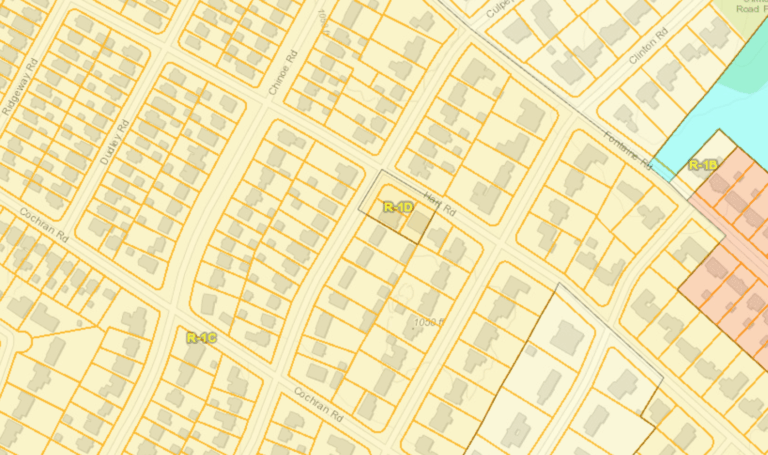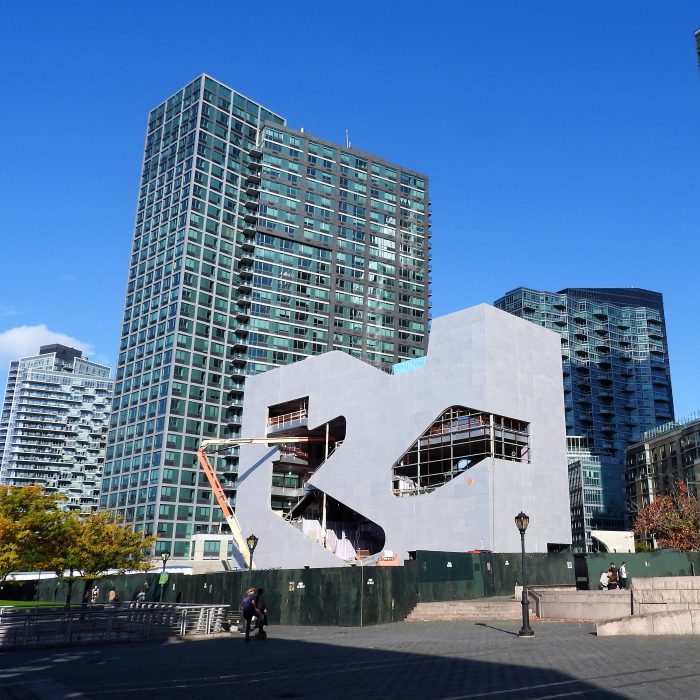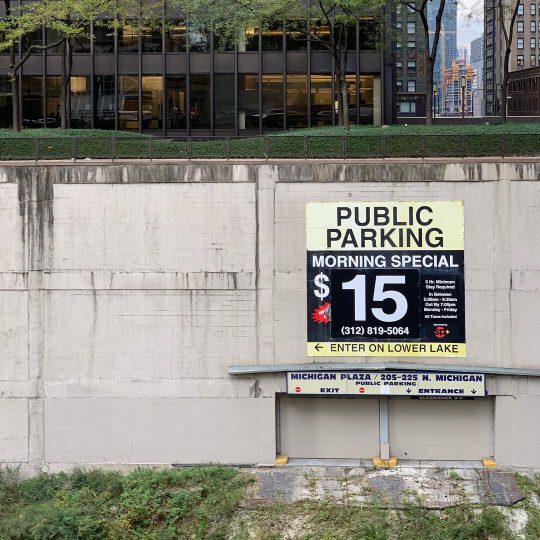Physical Address
304 North Cardinal St.
Dorchester Center, MA 02124
Physical Address
304 North Cardinal St.
Dorchester Center, MA 02124

Everybody loves missing middle housing! What’s not to like? It consists of neighborly, often attractive homes that fit in equally well in Rumford, Maine, and Queens, New York. Missing middle housing types have character and personality. They’re often affordable and vintage. Daniel Parolek’s new book Missing Middle Housing expounds the concept (which he coined), collecting in one place the arguments for missing middle housing, many examples, and several emblematic case studies. The entire book is beautifully illustrated and enjoyable to read, despite its ample technical details. Missing Middle Housing is targeted to people who know how to read a pro forma and a zoning code. But there’s interest beyond the home-building industry. Several states and cities have rewritten codes to encourage middle housing. Portland’s RIP draws heavily on Parolek’s ideas. In Maryland, I testified warmly about the benefits of middle housing. I came to Missing Middle Housing with very favorable views of missing middle housing. Now I’m not so sure. Parolek’s case for middle housing relies so much on aesthetics and regulation that it makes me wonder whether middle housing deserves all the love it’s currently getting from the YIMBY movement. Can middle housing compete? Throughout the book, Parolek makes the case that missing middle construction cannot compete, financially, with either single-family or multifamily construction. That’s quite contrary to what I’ve read elsewhere. In a chapter called “The Missing Middle Housing Affordability Solution”, Daniel Parolek and chapter co-author Karen Parolek write: The economic benefits of Missing Middle Housing are only possible in areas where land is not already zoned for large, multiunit buildings, which will drive land prices up to the point that Missing Middle Housing will not be economically viable. (p. 56) On page 81, we learn, It’s a fact that building larger buildings, say a 125-150 unit apartment […]

As zoning has become more restrictive over time, the need for “safety valve” mechanisms—which give developers flexibility within standard zoning rules—has grown exponentially. U.S. zoning officially has two such regulatory relief mechanisms: variances and special permits. Variances generally provide flexibility on bulk rules (e.g. setbacks, lot sizes) in exceptional cases where following the rules would entail “undue hardship.” Special permits (also called “conditional use permits”) generally provide flexibility on use rules in cases where otherwise undesirable uses may be appropriate or where their impacts can be mitigated. An extreme grade change is one reason why a lot might receive a variance, as enforcing the standard setback rules could make development impossible. Parking garages commonly require special use permits, since they can generate large negative externalities if poorly designed. Common conditions for permit approval include landscaping or siting the entrance in a way that minimizes congestion. (Wikipedia/Steve Morgan) In addition to these traditional, formal options, there’s a third, informal relief mechanism: spot zoning. This is the practice of changing the zoning map for an individual lot, redistricting it into another existing zone. Spot zonings are typically administered where the present zoning is unreasonable, but the conditions needed for a variance, special permit, or a full neighborhood rezoning aren’t. In many states, spot zonings are technically illegal. The thinking is that they are arbitrary in that they treat similarly situated lots differently. But in practice, many planning offices tolerate them, usually bundling in a few nearby similarly situated lots to avoid legal challenge. An example of a spot zoning. Variances, special permits, and spot zonings are generally considered to be the standard outlets for relief from zoning. But there’s a fourth mechanism that, to my knowledge, hasn’t been recognized: let’s call it the “spot text amendment.” Like spot zonings, spot text amendments […]

Many readers of this blog know that government subsidizes driving- not just through road spending, but also through land use regulations that make walking and transit use inconvenient and dangerous. Gregory Shill, a professor at the University of Iowa College of Law, has written an excellent new paper that goes even further. Of course, Shill discusses anti-pedestrian regulations such as density limits and minimum parking requirements. But he also discusses government practices that make automobile use far more dangerous and polluting than it has to be. For example, environmental regulations focus on tailpipe emissions, but ignore environmental harm caused by roadbuilding and the automobile manufacturing process. Vehicle safety regulations make cars safer, but American crashworthiness regulations do not consider the safety of pedestrians in automobile/pedestrian crashes. Speeding laws allow very high speeds and are rarely enforced. If you don’t want to read the 100-page article, a more detailed discussion is at Streetsblog.

1. Recently at Market Urbanism Any Green New Deal Must Tackle Zoning Reform by Nolan Gray According to the Environmental Protection Agency (EPA), transportation and electricity account for more than half of the US’ greenhouse gas emissions. As David Owen points out in his book “Green Metropolis,” city dwellers drive less, consume less electricity, and throw out less trash than their rural and suburban peers. This means that if proponents of the Green New Deal are serious about reducing carbon emissions, they will have to help more people move to cities. New York State’s Property Tax Cap by Michael Lewyn New York’s Gov. Cuomo has recently proposed a tax cut that buys popularity for state lawmakers on the backs of municipalities. In 2011, the state passed a law to limit local governments’ property tax increases to 2 percent or the rate of inflation, whichever is lower. This cap was originally temporary, but Cuomo now proposes to make it permanent. What Should YIMBY’s Learn from 2018? by Nolan Gray Believe it or not, the YIMBY movement won a lot in 2018. And rolling into 2019, elected officials at every level of California government—from the state’s new Democratic governor to San Diego’s Republican mayor—are singing from the YIMBY hymn sheet. All in all, it wasn’t a bad year for a movement that’s only five years old. But what really made 2018 such an unexpected success for YIMBYs? Yimbyism: the Evolution of an Idea by Jeff Fong Five years ago everything in California felt like a giant (land use policy) dumpster fire. Fast forward to today we live in a completely different world. Yimby activists have pushed policy, swayed elections, and dramatically shifted the overton window on California housing policy. And through this process of pushing change, Yimbyism itself has evolved as well. Evidence that home-sharing doesn’t raise rents by Michael Lewyn […]

Believe it or not, the YIMBY movement won a lot in 2018. It kicked off with January’s high of California State Senator Scott Wiener’s introduction of SB 827, which would have permitted multifamily development near transit across the state, but fell to a low after its eventual defeat in committee, invariably followed by a flurry of think pieces about how the pro-development movement had “failed.” At the time, I made the case for optimism over on Citylab, but that didn’t stop the summer lull from becoming a period of soul searching within the movement. And then, a strange thing happened: YIMBYs started winning, and winning big. In August, presidential-hopeful Senator Cory Booker released a plan to preempt exclusionary zoning using Community Development Block Grant funds, quickly followed by a similar plan from Senator Elizabeth Warren in September. Also in August, Housing and Urban Development Secretary Ben Carson unexpectedly outed himself as a YIMBY. Then, in December, things really got crazy: two major North American cities, Minneapolis and Edmonton, completely eliminated single-family zoning. States like Oregon soon started talking about doing the same. In the same month, California kicked into overdrive: San Francisco—ground zero for the YIMBY movement—scrapped minimum parking requirements altogether. State Senator Wiener introduced a newer, sharper version of SB 827. And rolling into 2019, elected officials at every level of California government—from the state’s new Democratic governor to San Diego’s Republican mayor—are singing from the YIMBY hymn sheet. All in all, it wasn’t a bad year for a movement that’s only five years old. But what really made 2018 such an unexpected success for YIMBYs? Focus on Citywide Reform Over Individual Rezonings Showing up and saying “Yes!” to individual projects that are requesting a rezoning, variance, or special permit is bread-and-butter YIMBY activism. And while YIMBYs should still […]

With the Democrats scrambling to come up with a legislative agenda after their November takeover of the House of Representatives, an old idea is making a comeback: a “Green New Deal.” Once the flagship issue of the Green Party, an environmental stimulus package is now a cause de celebre among the Democratic Party’s progressive wing. While it looks like the party leadership isn’t too receptive to the idea, newly-elected Representative Alexandria Ocasio-Cortez has spearheaded legislation designed to create a “Select Committee for a Green New Deal.” The mandate of the proposed committee is ambitious, possibly to a fault. At times utopian in flavor, the committee would pursue everything from reducing greenhouse gas emissions to labor law enforcement and universal health care. A recent plan from the progressive think tank Data for Progress is more disciplined, remaining focused on environmental issues, with clearer numerical targets for transitioning to renewable energy and reducing greenhouse gas emissions. Yet in all the talk about a Green New Deal, there’s a conspicuous omission that could fatally undermine efforts to reduce greenhouse gas emissions: little to no focus is placed on the way we plan urban land use. This is especially strange considering the outsized role that the way we live and travel plays in raising or lowering greenhouse gas emissions. According to the Environmental Protection Agency (EPA), transportation and electricity account for more than half of the US’ greenhouse gas emissions. As David Owen points out in his book “Green Metropolis,” city dwellers drive less, consume less electricity, and throw out less trash than their rural and suburban peers. This means that if proponents of the Green New Deal are serious about reducing carbon emissions, they will have to help more people move to cities. One possible reason for this oversight is that urban planning […]

In Generation Priced Out, housing activist Randy Shaw writes a book about the rent crisis for non-experts. Shaw’s point of view is that of a left-wing YIMBY: that is, he favors allowing lots of new market-rate housing, but also favors a variety of less market-oriented policies to prevent displacement of low-income renters (such as rent control, and more generally policies that make it difficult to evict tenants). What I liked most about this breezy, easy-to-read book is that it rebuts a wide variety of anti-housing arguments. For example, NIMBYs sometimes argue that new housing displaces affordable older housing. But Shaw shows that NIMBY homeowners oppose apartment buildings even when this is not the case; apartments built on parking lots and vacant lots are often controversial. For example, in Venice, California, NIMBYs opposed “building 136 supportive housing units for low-income people on an unsightly city-owned parking lot.” NIMBYs may argue that new housing will always be for the rich. But Shaw cites numerous examples of NIMBYs opposing public housing for the poor as well as market-rate housing for the middle and upper classes. NIMBYs also claim that they seek to protect their communities should be protected against skyscrapers or other unusually large buildings. But Shaw shows that NIMBYs have fought even the smallest apartment buildings. For example, in Berkeley, NIMBYs persuaded the city to reject a developer’s plan to add only three houses to a lot. On the other hand, market urbanists may disagree with Shaw’s advocacy of a wide variety of policies that he refers to as “tenant protections” such as rent control, inclusionary zoning, increased code enforcement, and generally making it difficult to evict tenants. All of these policies make it more difficult and/or expensive to be a landlord, thus creating costs that may either be passed on to tenants […]

1. Recently at Market Urbanism: Three Policies for Making Driverless Cars Work for Cities by Emily Hamilton To avoid repeating mistakes of the past, policymakers should create rules that neither subsidize AVs nor give them carte blanche over government-owned rights-of-way. Multiple writers have pointed out that city policymakers should actively be designing policy for the driverless future, but few have spelled out concrete plans for successful driverless policy in cities. Here are three policies that urban policymakers should begin experimenting with right away in anticipation of AVs. Rent Control Makes It Harder to Vote with Your Feet by Gary Galles devolving political power to lower level governments does not serve citizens’ rights when it comes to rent control, because rent control paralyzes owners’ ability to escape imposed burdens by voting with their feet. 2. Also by Market Urbanism writers: Nolan Gray at Citylab: Voters Said No in California, but Other States Have Rent Control Battles Looming Michael Lewyn at Planetizen: The Lincoln Park Story (On Daniel Hertz new book on the gentrification of the Chicago neighborhood) Michael Lewyn at Planetizen: New Urbanists and New Housing (about the friendly-but-troubled Market Urbanist/New Urbanist relationship) 3. At the Market Urbanism Facebook Group: Roger Valdez for Forbes: How To End The ‘Housing Crisis’ Roger Valdez for Forbes: HQ2 Frontlash Begins: The Answer Is More Housing, Some Built By Amazon Isabella Chu asks: Are people equally concerned about how to bring jobs to the once flourishing and housing rich older cities of the northeast? Anthony Ling asks: What are your thoughts on Richard Florida’s petition against Amazon HQ2’s “auction”? Via Joe Wolf: Seattle’s Most Influential People 2018: The YIMBYs Via Mirza Ahmed: Paid parking could be coming to Tacoma Dome Station Via Elizabeth Connor: Why we should pay more for parking Via Robert Wilson: At “Eleventh Hour,” City Rejects Tiny Home Village Plan to Relocate to TAXI Campus Via […]
Some urbanists have become skeptical about the future of autonomous vehicles even as unstaffed, autonomous taxis are now serving customers in Phoenix and Japan. Others worry that AVs, if they are ever deployed widely, will make cities worse. Angie Schmitt posits that allowing AVs in cities without implementing deliberate pro-urban policies first will exacerbate the problems of cars in urban areas. However, cars themselves aren’t to blame for the problems they’ve caused in cities. Policymakers created rules that dedicated public space to cars and prioritized ease of driving over other important goals. Urbanists should be optimistic about the arrival of AVs because urbanist policy goals will be more politically tenable when humans are not behind the wheel. To avoid repeating mistakes of the past, policymakers should create rules that neither subsidize AVs nor give them carte blanche over government-owned rights-of-way. Multiple writers have pointed out that city policymakers should actively be designing policy for the driverless future, but few have spelled out concrete plans for successful driverless policy in cities. Here are three policies that urban policymakers should begin experimenting with right away in anticipation of AVs. Price Roadways Perhaps the biggest concern AVs present for urbanists is that they may increase demand for sprawl. AVs may drastically reduce highway commute times over a given distance through platooning, and if people find their trips in AVs to be time well-spent, when they can work, relax, or sleep, they may be willing to accept even more time-consuming commutes than they do today. As the burden of commuting decreases, they reason, people will travel farther to work. However, the looming increase in sprawl would be due in large part to subsidized roads, not AVs themselves. If riders would have to fully internalize the cost of using road space, they would think twice […]

1. Recently at Market Urbanism: Response to “Steelmanning the NIMBYs” by Michael Lewyn Scott Alexander, a West Coast blogger, has written a post that has received a lot of buzz, called “Steelmanning the NIMBYs”; apparently, “steelmanning” is the opposite of “straw manning”; that is, it involves making the best possible case for an argument you don’t really support. The land price argument and why it fails by Michael Lewyn One common argument against all forms of infill development runs something like this: “In dense, urban areas land prices are always high, so housing prices will never be affordable absent government subsidy or extremely low demand. 2. Also by Market Urbanism writers: Nolan Gray at Strong Towns: Wide Streets as a Tool of Oppression Nolan Gray at CityLab: The Improbable High-Rises of Pyongyang, North Korea Nolan Gray at Strong Towns: What if Lexington Got Serious About Student Drunk Driving? 3. At the Market Urbanism Facebook Group: Randy Shaw launched pre-orders for his upcoming book, Generation Priced Out: Who Gets to Live in the New Urban America Donald Shoup for Planning Magazine: Parking Price Therapy Nolan Gray shares the campaign site for a YIMBY candidate, Sonja Trauss for Supervisor 2018 Matt Miller asks: What’s the future of retail? Mark D Fulwiler says: Only about 4% of all commuters ( on average ) take mass transit on any given day Ben Barov asks: Are vacancy taxes market urbanism? Andrew Mayer asks: How much urban housing needs to be built to fix the deficit of supply? James Hanley likes open space on waterfronts, but keeps thinking of Jane Jacobs‘ criticisms of big parks. “What are your responses to this?” Via Adam Hengels: Steelmanning the NIMBYs Via Shawn Ruest: Elizabeth Warren’s New Bill Would Spend $500 Billion on Housing Via Carl Webb: So You Want to Change Zoning to Allow for More Housing Via Stephen Bone: How Singapore Solved Its Housing Problem Via Michael Burns: A Network […]